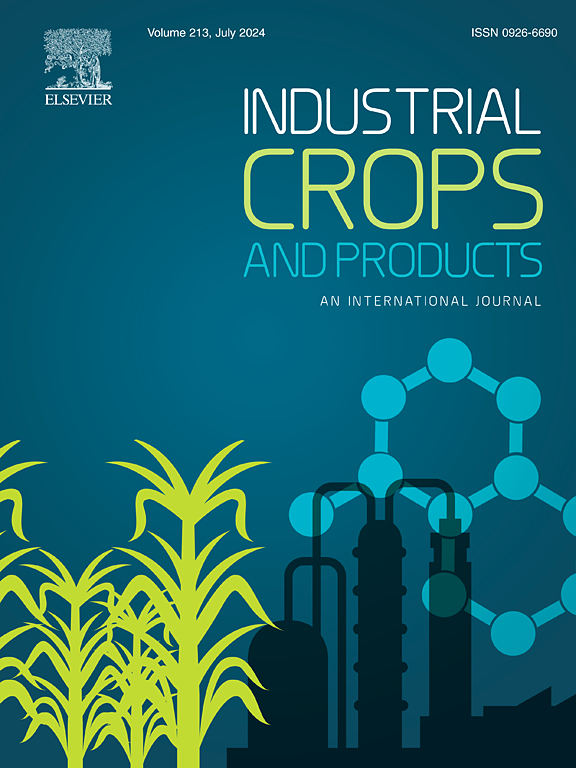Encapsulation of sesame protein hydrolysates prepared by a metagenomic protease: Effect of wall material composition on stability and antimicrobial activity
IF 5.6
1区 农林科学
Q1 AGRICULTURAL ENGINEERING
引用次数: 0
Abstract
Sesame protein hydrolysates (SPH), produced in a metagenome-derived protease (PersiProtease1), exhibited significant antimicrobial activity and functional potential. To enhance their stability and bioactivity, SPH was encapsulated using biopolymer matrices composed of starch (ST), gum arabic (GA), and sesame protein isolate (SPI) at different ratios. Encapsulation efficiency, solubility, and moisture content were evaluated, revealing that a 1:6 (ST-GA:SPI) ratio provided the highest encapsulation efficiency (70 %) and improved physicochemical stability. Structural analyses using SEM, AFM, DLS, and FTIR confirmed the formation of smaller and more stable particles with desirable surface characteristics. Antimicrobial assays, including fluorescence microscopy and bacterial growth inhibition tests, demonstrated that encapsulated SPH at the optimal ratio reduced Escherichia coli growth by 65.46 %, with clear evidence of membrane damage. These results highlight the synergistic effects of protein-based wall materials in improving encapsulation performance and antimicrobial efficacy. This study suggests that SPI-enriched encapsulation systems are an effective strategy for stabilizing bioactive peptides and enhancing their functionality in food and feed formulations. These findings support the use of encapsulated SPH as a promising natural preservative with broad application potential in agricultural and nutritional industries.
宏基因组蛋白酶制备的芝麻蛋白水解物的包封:壁材组成对稳定性和抗菌活性的影响
芝麻蛋白水解物(SPH)是由宏基因组衍生的蛋白酶(PersiProtease1)产生的,具有显著的抗菌活性和功能潜力。为了提高SPH的稳定性和生物活性,我们将淀粉(ST)、阿拉伯胶(GA)和芝麻分离蛋白(SPI)按不同比例组成的生物聚合物基质包封SPH。对包封效率、溶解度和水分含量进行了评估,结果表明1:6 (ST-GA:SPI)的包封效率最高(70 %),并且提高了物理化学稳定性。使用SEM, AFM, DLS和FTIR进行结构分析,证实形成更小,更稳定的颗粒,具有理想的表面特征。包括荧光显微镜和细菌生长抑制试验在内的抗菌试验表明,以最佳比例包封的SPH可使大肠杆菌的生长减少65.46 %,并有明显的膜损伤证据。这些结果突出了蛋白基壁材料在提高包封性能和抗菌功效方面的协同作用。该研究表明,在食品和饲料配方中,富含spi的胶囊化系统是稳定生物活性肽并增强其功能的有效策略。这些发现支持了包封的SPH作为一种有前景的天然防腐剂在农业和营养工业中具有广泛的应用潜力。
本文章由计算机程序翻译,如有差异,请以英文原文为准。
求助全文
约1分钟内获得全文
求助全文
来源期刊

Industrial Crops and Products
农林科学-农业工程
CiteScore
9.50
自引率
8.50%
发文量
1518
审稿时长
43 days
期刊介绍:
Industrial Crops and Products is an International Journal publishing academic and industrial research on industrial (defined as non-food/non-feed) crops and products. Papers concern both crop-oriented and bio-based materials from crops-oriented research, and should be of interest to an international audience, hypothesis driven, and where comparisons are made statistics performed.
 求助内容:
求助内容: 应助结果提醒方式:
应助结果提醒方式:


